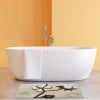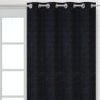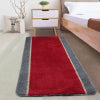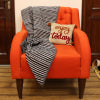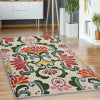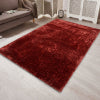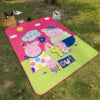11 Essential Guidelines for Breathtaking Home Decor!
Posted by AMIT KUMAR
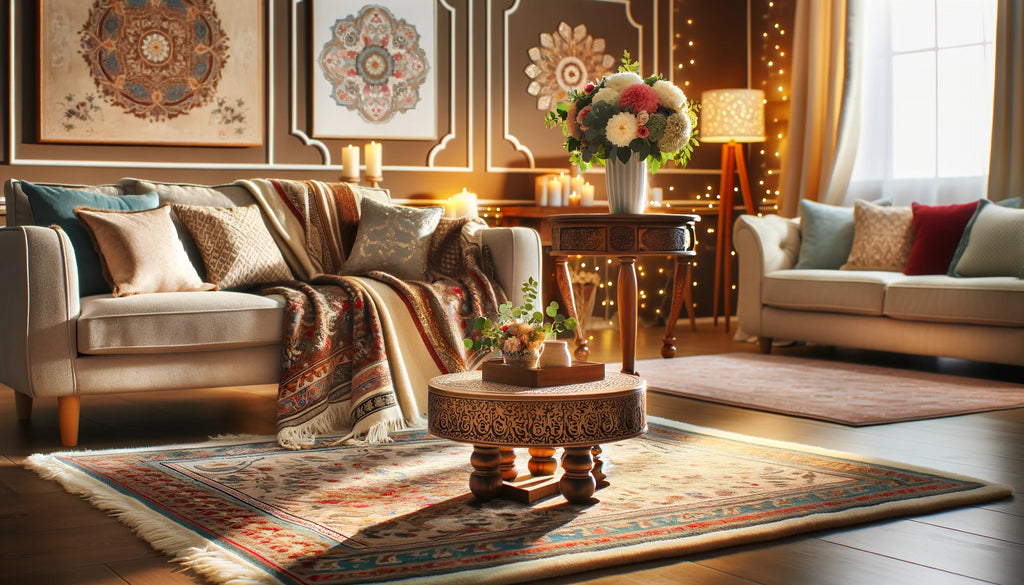
A Palette of Perfection
Start decorating by picking colors that match your style. Use colors that work well together to make the room feel united and balanced. Choose calm blues and greens for a peaceful feel, or go for bright reds and yellows for a lively look.
Furniture Finesse: Where Comfort Meets Style
Choose furniture that looks good and feels comfortable. Go for items that are both stylish and useful, like cozy, ergonomic sofas and chairs. This way, your living area will be both attractive and comfy.
Let There Be Light
Light up your space smartly. Mix natural light with different artificial lights like pendants and lamps to set the mood and show off your design. Use dimmer switches to change the light for different times and events.
Mirrors as Magic: Expanding Spaces
Use mirrors to make your room look bigger. They reflect light and make spaces seem larger. Try various shapes and sizes for a bit of style. Place mirrors across from windows to bring in more natural light and make the room feel more open.
Textured Tales: Layering for Luxury
Introduce textures to your decor for a sensory experience. From carpet for living room to velvety cushions, layering textures adds depth and warmth to your living spaces.
Statement Wall
Make a standout wall to draw attention. Use bright wallpaper, a different paint color, or special art to make a central point in the room. This sets the mood for the whole space. Try a textured wall or a mural to add character and excitement.
Green Elegance
Add plants to your home for a natural touch. Indoor plants clean the air and bring calm. Try different kinds to see what works in your space. Easy-to-care-for plants like succulents or big, leafy ones can make a big visual impact.
Curate with Care
Arrange your decor with purpose. Whether it's framed art, sculptures, or personal artifacts, thoughtful placement adds a personal touch. Aim for a balanced composition that tells a story unique to you. Consider creating a gallery wall with a mix of artwork and photographs, allowing each piece to contribute to the overall narrative.
Grounding Your Design
Choose the perfect rug to shape your room. Rugs do more than look good—they define areas, connect furniture, and add coziness. Pick a rug that matches your room's style to make everything feel connected and welcoming. A big rug that fits all your main furniture can bring the room together and feel great under your feet.
Sensational Scents
Enhance your space with special scents. Use scented candles, diffusers, or fresh flowers to add another layer to your decor. They leave a memorable impression and help set the mood. Pick scents that match the feeling you want, like lavender for calmness or citrus for a fresh, lively vibe.
Declutter Delight: Simplicity is Sophistication
Keep it simple. A less cluttered space looks more elegant. Choose a minimalist style, letting important pieces stand out. Stylish storage can help keep things tidy, making your home look neat and inviting.
Common Mistakes to Avoid While Decorating Your Home
Decorating your home is an exciting journey, but sometimes, even the best intentions can lead to visual disharmony. Let's explore some common mistakes in interior design and how you can steer clear of them to create a balanced and visually pleasing space.
Finding the Right Mix
Imagine introducing a bold color or a large piece of furniture without considering its impact on the overall balance of the room. This is a common mistake that can throw off the visual harmony. The key is to balance strong elements with others that complement and offset their visual weight. It's about finding the right mix to create a cohesive and pleasing atmosphere.
Lack of a Focal Point: Bringing Life to Your Space
A room without a focal point can feel a bit dull. A focal point is like the star of the show—a statement piece of furniture, a captivating artwork, or a unique architectural feature that draws attention and ties everything together. Don't forget to give your room a centerpiece; it's the secret ingredient to bringing life and interest to your space.
Less is More
Accessories add character, but overdoing it can lead to visual clutter. Instead of showcasing every decorative item you have, opt for a few carefully selected statement pieces. Less is often more when it comes to accessories, allowing each piece to shine without overwhelming the room.
Furniture Against the Wall
While it may seem logical to place all furniture against the wall, it disrupts both visual and physical balance. Instead, distribute your furniture evenly throughout the space. Create cozy groupings that encourage conversation and consider the natural flow of movement within the room. This simple adjustment can transform your space, making it feel more inviting and balanced.
Adding Variety for Interest
Uniformity can lead to monotony. Matching everything in the room might seem safe, but it lacks visual interest. Embrace variety in colors, textures, and shapes to create a dynamic and balanced atmosphere. It's the mix of different elements that adds personality and keeps your eyes engaged.
How to Identify the Focal Points of a Room
Identifying the focal point of a room is crucial in home decor as it sets the tone and draws attention to a specific area. Here's a guide on how to pinpoint the focal point in a room:
Architectural Features:
Fireplace: If your room has a fireplace, it's a natural focal point. Arrange furniture to enhance this feature, making it the center of attention.
Windows: A large or uniquely shaped window with a view can serve as a focal point. Frame it with curtains or use it as a backdrop for key furniture pieces.
Large Furniture Pieces:
Bed or Headboard: In bedrooms, the bed often serves as the focal point. Position it against the most visually prominent wall and complement it with statement bedsheet or a striking headboard.
Statement Sofa: In living rooms, a bold or uniquely designed sofa can be the focal point. Arrange other furniture around it to highlight its prominence.
Artwork and Wall Decor:
Gallery Wall: Create a gallery wall with a collection of artwork. The arrangement can become the focal point, especially if it contrasts with the wall color or is illuminated strategically.
Large Art Piece: A single, large piece of art can command attention. Hang it on a wall that naturally draws the eye as you enter the room.
Statement Lighting:
Chandeliers or Pendant Lights: Unique or eye-catching lighting fixtures can become a focal point. Hang them in a way that emphasizes their presence, such as over a dining table or in the center of a room.
Built-In Shelving or Bookcases:
Styled Shelves: If the room has built-in shelving, style it with a carefully curated collection of books, art, or decorative items. This can become a focal point that showcases your personality.
Rugs and Flooring:
Area Rug: A vibrant or patterned area rug can define a space and serve as a focal point. Center furniture around the rug to anchor the room visually.
Unique Flooring: If your bed room has distinctive flooring, such as hardwood with an intricate pattern, use it as a focal point by keeping the surrounding decor simple.
Technology Center:
Entertainment Center: In modern living rooms, the TV or entertainment center often becomes the focal point. Consider integrating it into a stylish media console or feature wall.
Nature Elements:
Indoor Plants: A large, lush indoor plant or a group of plants can draw the eye, bringing a touch of nature into the room.
Personal Collections:
Collections or Antiques: Showcase a collection of unique items or antiques on a dedicated shelf or display cabinet to create a focal point that reflects your personal style.
Color Contrast:
Accent Wall: Paint one wall in a bold color or use wallpaper to create an accent wall. This contrast can become an instant focal point in the room.
Remember, the focal point should reflect your style and the function of the room. Experiment with different elements until you find the one that naturally draws attention and enhances the overall aesthetic of the space.


































